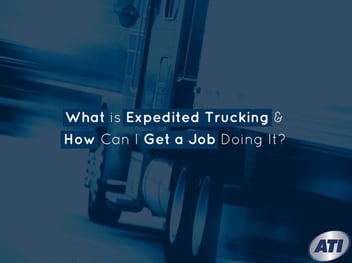Trucker Shortage means Openings in the Field for Hampton Roads Residents

The trucking industry is carrying more weight than ever even with a critical shortage of drivers needed to transport the 70% of freight that travels by truck. The shortage that has been simmering for years has reached a full boil with about 90,000 drivers needed every year. Now, this compression point is sending waves of anxiety from distributors and wholesalers to consumers and retailers in the form of swelling shipping costs.
This situation was a long time coming and the fissures began to show in 2012 as the U.S economy became stronger. The problem is not going away soon with an analysis by the ATA showing that truckload volumes are expected to increase 3.5 percent by 2024.
The deficit is confined to long-haul truckload carriers who crisscross the country. Industry experts are concerned and fear that the already chronic shortage many nearly triple by 2026 is no meaningful steps are taken to change the situation.
Behind the Shortage: Age and Gender
The demographics of the current workforce is one of the largest factors affecting the trucker shortage. The trucking industry heavily relies on male drivers who are 45 years of age or older. In fact, the average age of commercial truck drivers in the U.S is 55 years old, according to the Bureau of Labor Statistics. This means there’s an alarming amount of truckers who’ll be retiring with the next few years.
The industry is approaching a dangerous cliff if new, younger employees are not hired into the industry to replace retiring workers. Federal law requires that one must be 21 years old to hold a Commercial Drivers’ License that allows them to cross state lines. This leaves a 3-year post-high school gap, where high school graduates get attracted to new employment opportunities and eliminate long-haul trucking as a viable vocation.
Women make up 47 percent of the nation’s workforce but only 6 percent of them are in the trucking industry. This means that the industry is only tapping into a half of the working population. It’s important that trucking companies offer everyone what they want and need in a job in order to help fill this gap and keep America moving.
How Does The Shortage Open Up Jobs For Newcomers To The Field?
If you’re looking for a long-term career, there’s no better time to jump in the commercial truck driving industry than now. Drivers are badly needed and trucking companies are so desperate that they offering pay raises and signing bonuses with the aim of encouraging people to fill unoccupied jobs. With more drivers retiring and increased driver turnover, there will be more opportunities available and this will favor newcomers to the field.
Why Is Taking a Formal Training Course Essential to Success?
According to the BLS, job prospects for truck drivers are expected to grow 6 percent from 2016 to 2026. While you can make your move into the field with just a driver’s license and no prior experience, obtaining formal education helps prepare you for life on the road.
There’s a lot to learn and many employers look for drivers equipped with the training that insurance companies increasingly insist upon. You’ll need a Commercial Driver’s License to safely operate a truck with 26,000lbs GVWR or tow another vehicle weighing up to 10,000lbs.
Skills taught include more than being beside a driver in the cab. The program prepares students to meet the needs of the highway cargo. At the end of your formal training course, you’ll have endorsements, the licensing permits, and have taken the necessary driving test. Formal education should give you plenty of road practice, through road operation as you learn to avoid jackknifing, turn safely, back up, and much more.
Are you ready to take the first step toward a promising career as a truck driver? You could earn your CDL in one of our commercial driving classes at Advanced Technology Institute. Connect with us today to learn more.
Industry Knowledge
Welcome to the Advanced Technology Institute's Blog, your resource for industry insights and discussions on technologies shaping the future of automotive, heavy vehicle, hvac, welding, and other related career paths.
Explore how ATI's curriculum and hands-on learning opportunities can propel your career in the tech-driven world.






